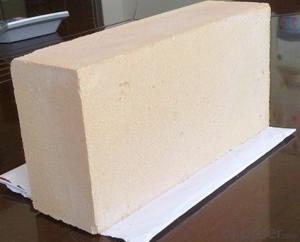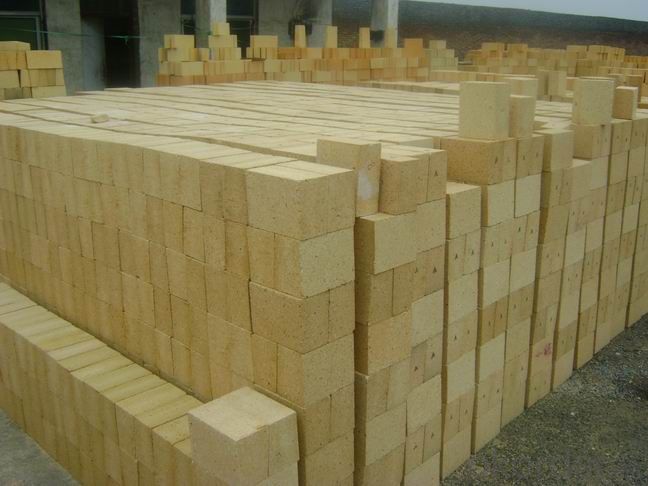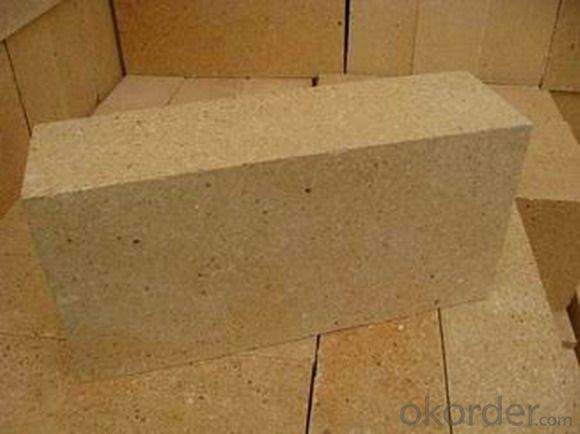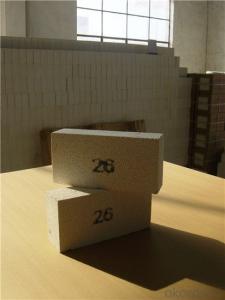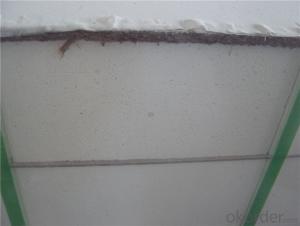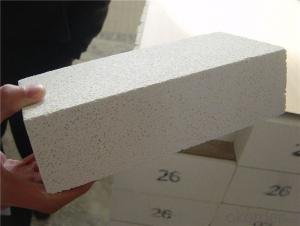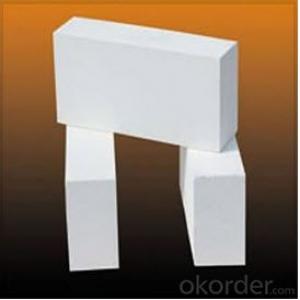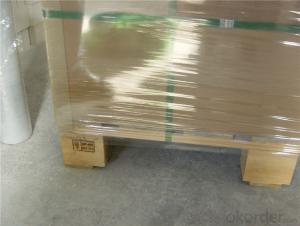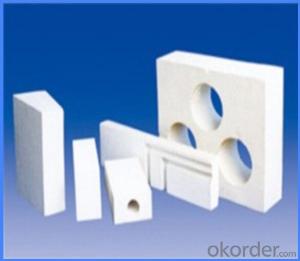Insulating Fire Brick - Manufacturer of Clay Brick Fire Clay Insulation Brick for Glass Furnace
- Loading Port:
- Tianjin
- Payment Terms:
- TT OR LC
- Min Order Qty:
- 20 m.t.
- Supply Capability:
- 10000 m.t./month
OKorder Service Pledge
OKorder Financial Service
You Might Also Like
CNBM conforms strictly to the requirements of ISO 9000 quality control system during the production. MSDS is also available if you want. The thermal insulation fire clay brick meet with the requirements of ASTM & JIS standards. So pls stay cool with our quality.
Insulating Fire Brick Technical index
Product No. | IFB70 | IFB60 | IFB50 | IFB40 |
Al2O3 | 68%-72% | 58%-62% | 48%-52% | 38%-40% |
Refractoriness (°C ) | ≥1790 | ≥1790 | ≥1790 | ≥1790 |
Bulk density (g/cm3) | 2.50-2.60 | 2.35-2.45 | 2.20-2.30 | 2.10-2.20 |
Apparent porosity (%) | 22 | 19-22 | 17-20 | 17-20 |
Cold Crushing strength (kg) | 480-510 | 450-480 | 430-450 | 390-430 |
Application
Insulating Fire Brick are used for the lining of converter, alternating current arc furnace, direct Current arc furnace and the ladle slag line, etc.
Equipment
1 unit of Ceramic Abrasive (SG Abrasive) pilot production line
2 units of Compact grain Abrasive pilot production lines
1 unit of high-end coated abrasives (abrasive cloth) production line
2 units of Boron Carbide production lines
3 large flexible crushing and sieving lines for grit production lines
2 units of 2000KVA furnaces for Boron Carbide fusion
6 units of 5000KVA-10000KVA dumping type electric arc furnaces for Brown Fused Alumina fusion
Company Advantage
(1)Long Insulating Fire Brick manufacture history: 25 years manufacturer
(2)Advanced equipment
(3)Diversification of production standards: ISO ANSI FEPA JIS ASTM
(4)Flexible payment: T/T L/C D/P D/A
(5)Professional marketing team and after-sale service
(6)Free sample
FAQs
Q1 |
What’s the transport method? |
A1 | FCL delivery goods with wooden pallet or wooden case by sea; If LCL delivery, must with wooden case; Sometimes need open top, flat rack or bulk cargo. |
Q2 |
What’s the required payment term? |
A2 | Generally 30% TT as the prepayment, 70% TT before delivery. If need, 100% Irrevocable Letter of Credit or negotiation. |
Q3 |
Which country are our products exported to? |
A3 | Apart from entire Chinese market, the US, Russia, Japan, Korea, Australia and some Southeast Asian Nations. |
- Q: How shall the sintered porous self insulation bricks be laid at the bottom of the beam?
- All reserved holes larger than 200 * 200 shall be reserved
- Q: Can insulating fire bricks be used in high-temperature filters?
- Yes, insulating fire bricks can be used in high-temperature filters. Insulating fire bricks are designed to withstand extremely high temperatures, typically up to 3000°F (1650°C). They have excellent thermal insulation properties, low thermal conductivity, and high resistance to thermal shock, making them ideal for applications that involve high temperatures. In high-temperature filters, insulating fire bricks can be used to form the structure of the filter, ensuring that it can withstand the intense heat generated. These bricks can be arranged in a way that allows for efficient filtration of gases or liquids while maintaining their structural integrity at high temperatures. The insulating properties of these bricks also help to minimize heat loss and maximize energy efficiency. Furthermore, insulating fire bricks are often chemically inert and have good resistance to corrosive substances, making them suitable for use in various industrial processes that involve the filtration of aggressive or hazardous materials at high temperatures. Overall, the use of insulating fire bricks in high-temperature filters provides a reliable and durable solution for filtering applications that require resistance to extreme temperatures.
- Q: Can insulating fire bricks be used in the construction of furnaces?
- Yes, insulating fire bricks can be used in the construction of furnaces. These bricks are specifically designed to withstand high temperatures and provide excellent insulation, making them ideal for lining the walls of furnaces. They help to reduce heat loss, increase energy efficiency, and improve overall performance of the furnace.
- Q: How do insulating fire bricks affect the overall weight capacity of a structure?
- The overall weight capacity of a structure can be significantly impacted by insulating fire bricks. These bricks are designed to be lightweight with high thermal insulation properties, unlike traditional dense firebricks. By incorporating insulating fire bricks, the structure's weight is reduced, allowing for more allocation of weight to other components or materials. This proves advantageous in situations where weight restrictions are important, like in aerospace, automotive, or marine applications. Furthermore, the lightweight nature of insulating fire bricks lessens the load on the foundation and supporting structures. This contributes to preventing structural damage and enhancing the safety and durability of the entire structure. Nevertheless, it is important to note that insulating fire bricks, although lighter, might possess slightly lower compressive strength compared to dense firebricks. Consequently, it is crucial to thoroughly consider the specific requirements of the structure and ensure that the chosen insulating fire bricks can endure the anticipated load and stresses. To summarize, insulating fire bricks have a positive impact on the overall weight capacity of a structure by decreasing its weight and lessening the load on supporting structures. However, it is crucial to consider the specific application and select the appropriate insulating fire bricks to ensure structural integrity and safety.
- Q: Can insulating fire bricks be used in the construction of radiant tubes?
- Yes, insulating fire bricks can be used in the construction of radiant tubes. Insulating fire bricks are specially designed to provide excellent thermal insulation, making them ideal for applications where heat retention is important. Radiant tubes are used in high-temperature environments, such as furnaces and kilns, where they are exposed to extreme heat. Insulating fire bricks can withstand these high temperatures and help to minimize heat loss, resulting in improved energy efficiency. Additionally, the insulating properties of these bricks can also help to protect the radiant tubes from thermal shock and prolong their lifespan. Overall, using insulating fire bricks in the construction of radiant tubes can enhance their performance and durability.
- Q: Are insulating fire bricks easy to cut and shape?
- Yes, insulating fire bricks are relatively easy to cut and shape. They are made of lightweight materials such as ceramic fibers, which can be easily cut using common tools like saws or knives. Additionally, their low-density composition allows for easier shaping and customization to fit specific requirements.
- Q: Can insulating fire bricks be cut or shaped to fit specific applications?
- Yes, insulating fire bricks can be cut or shaped to fit specific applications. Insulating fire bricks are made from lightweight refractory materials, typically ceramic fibers or lightweight aggregates, which allows them to be easily cut or shaped without compromising their structural integrity. They can be cut with a saw, knife, or other cutting tools to fit specific dimensions or shapes required for various applications, such as lining kilns, furnaces, or fireplaces. Additionally, insulating fire bricks can be shaped by using molds or by hand molding during the manufacturing process. This flexibility in cutting and shaping makes insulating fire bricks highly versatile and suitable for a wide range of industrial and residential applications.
- Q: Are insulating fire bricks suitable for use in aluminum smelting furnaces?
- Yes, insulating fire bricks are suitable for use in aluminum smelting furnaces. They have excellent thermal insulation properties, high temperature resistance, and can withstand the harsh conditions of aluminum smelting. Additionally, their low thermal conductivity helps to reduce energy consumption and increase furnace efficiency.
- Q: What kind of mortar is used to bond insulating fire bricks together?
- The kind of mortar typically used to bond insulating fire bricks together is called refractory mortar.
- Q: Do insulating fire bricks require any curing before use?
- Indeed, curing is necessary for insulating fire bricks prior to their usage. Curing refers to the procedure of drying and toughening the bricks in order to guarantee their resilience against high temperatures, preventing any potential cracking or breaking. To accomplish this, the temperature needs to be elevated gradually over a specific duration, usually commencing with a gentle heat and slowly escalating it throughout several hours. Curing is pivotal as it aids in eliminating any moisture or volatile substances that may exist within the bricks, which, if left untreated, could lead to cracking or even explosion when exposed to elevated temperatures. To ensure the correct installation and longevity of the fire bricks, it is crucial to adhere to the manufacturer's guidelines regarding the curing process.
Send your message to us
Insulating Fire Brick - Manufacturer of Clay Brick Fire Clay Insulation Brick for Glass Furnace
- Loading Port:
- Tianjin
- Payment Terms:
- TT OR LC
- Min Order Qty:
- 20 m.t.
- Supply Capability:
- 10000 m.t./month
OKorder Service Pledge
OKorder Financial Service
Similar products
Hot products
Hot Searches
Related keywords
